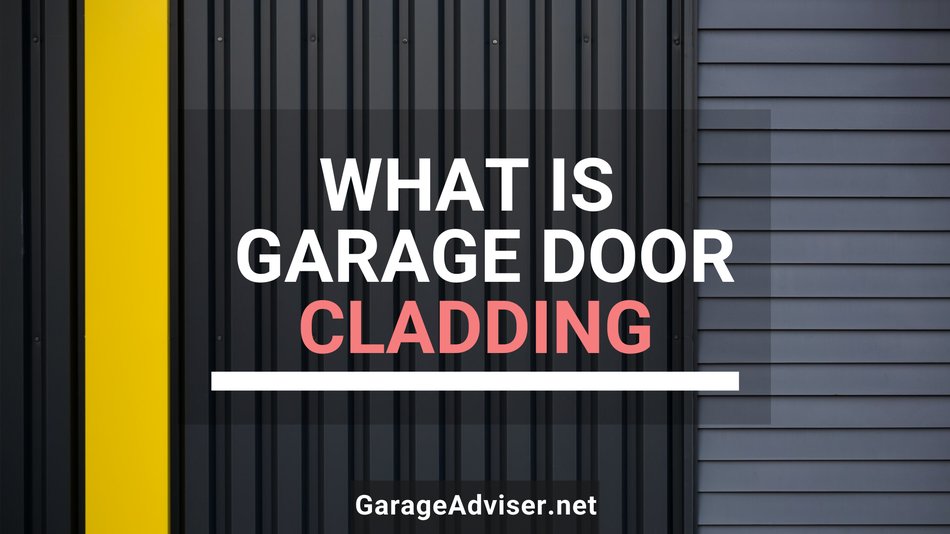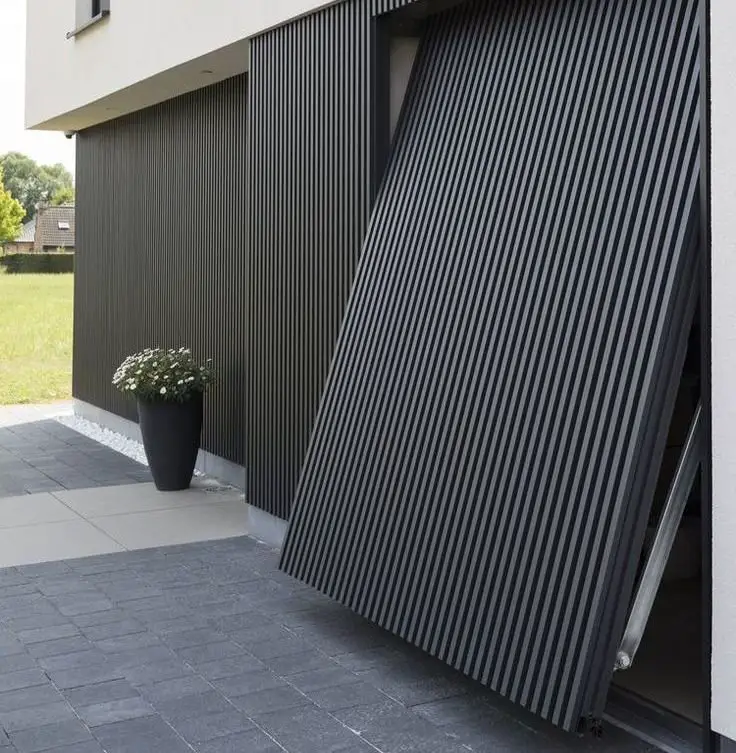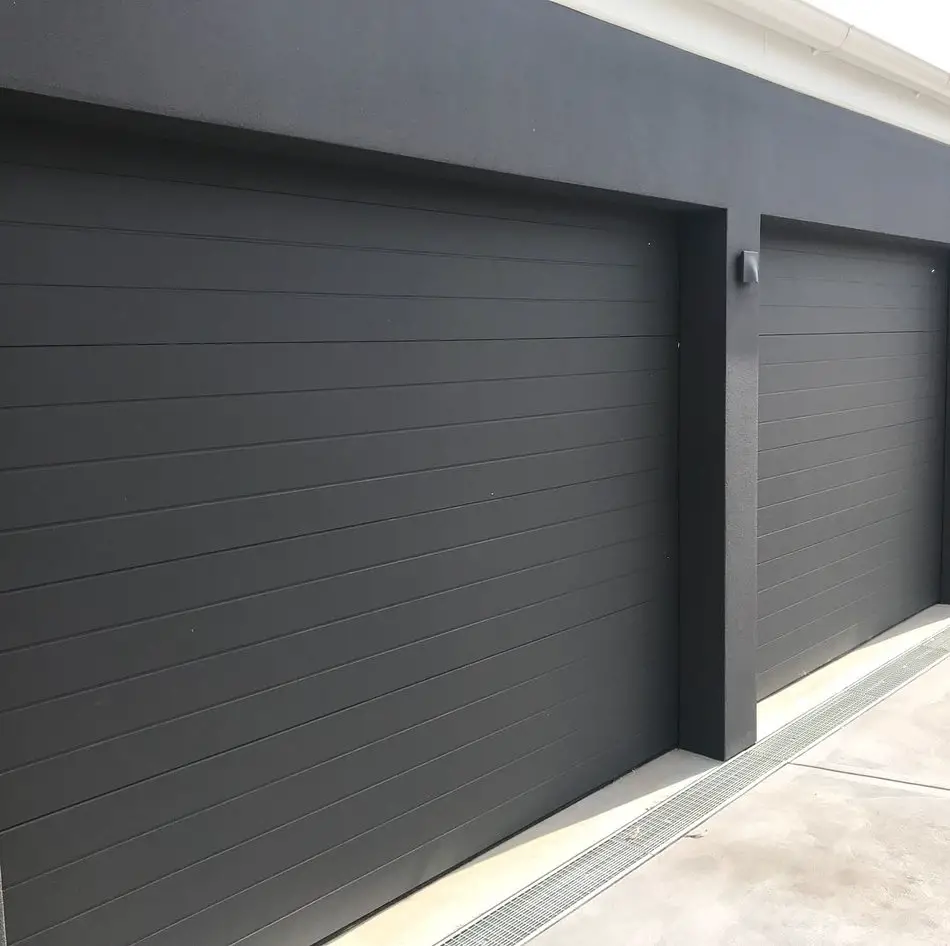
Perhaps, you have always hated your garage door’s design, or maybe your garage door panels are damaged and looking old, or maybe someone suggested you clad your garage door, but you didn’t really know what they were talking about. I was in a similar situation, so I researched garage door cladding, and I’m going to share everything I learned in this article.
What is Garage Door Cladding?
Garage door cladding refers to covering or coating garage door panels and frames with a different material. This is usually done on the exterior of the garage door to give it a new look. Wood is the most popular choice for garage door cladding; however, other materials such as metal and UPVC can also be used.
Cladding is increasingly becoming popular, and it’s not a thing for only garage doors but various types of doors, windows, glass, and even walls. We’ll take a look at some of the reasons you should consider cladding your garage door, the pros and cons of cladding, and some common materials for cladding a garage door. Let’s get into it.
Why you should consider garage door cladding
There are two main reasons why homeowners look to clad their garage doors. Here they are
New garage door design
A lot of homeowners start looking into cladding because of their garage door’s design. Many people can’t stand the look of their garage doors. This is because they usually buy homes which has a garage door already installed. They had no-decision in the selection of their preexisting door.
Garage doors have become the most used entry points to our homes. We use it every day. And to see an ugly-looking every single day can suck.
Garage door cladding is an excellent way to customize your garage door’s look without having to invest in a newer door. It simply makes sense to choose to clad over buying a brand new door if the door is functional and does not give you any problems.
Safety and Protection
Safety and protection are part of why homeowners with wood garage doors decide to clad their doors. Why?
Wood garage doors, for instance, are exposed to sunshine, heavy rains, and all kinds of harsh weather conditions that deteriorate it over time. Some metal garage doors tend to rust after being exposed to the elements. To keep it in good condition, it is crucial to perform routine maintenance.
However, this seems like a burden to a lot of homeowners with garage doors that require maintenance. They don’t have the time, don’t know how to go about it, or simply don’t enjoy doing it. In this situation, cladding the garage door with a low maintenance material such as UPVC is an excellent idea.
The garage door will be fully protected from weather conditions, pests, corrosion, as well as wear and tear.
Pros
What are some of the benefits of cladding your garage door?
Save cash on a new garage door.
Before garage door cladding was a thing, there were a few options available to you if you didn’t like the door’s design. That is to either paint it or buy a new garage door. Painting can be effective to some extent, but the garage door’s design would still be the same, just in a different color.
Buying a newer garage door with a design you like is an excellent choice. However, the cost involved makes a lot of homeowners shy away from this option. This makes cladding the way to go, without spending so much.
Low maintenance
Some cladding materials require no maintenance at all after it is installed. An example is UPVC. This is a material that requires no maintenance because it doesn’t get affected by sunshine, heavy rains, or harsh weather conditions. By cladding your garage door, there will be no need to frequently paint your door. A good wash once every two years should be enough to keep it looking new.
Cons
Obviously, there are some downsides to cladding a garage door that you need to be aware of.
Expensive
Cladding your garage door can be very expensive. The cost usually depends on the material you go for and the hiring fee of the experts that will clad the door. If you are an excellent DIY’er, you can save some bucks installing it yourself. But for most people, they’ll be better off hiring a professional, and that comes at a cost.
The garage door can get heavy.
Depending on your choice of material, the garage door can get pretty hefty after the new panels are coated on the garage door. This means you may need to replace your garage door spring with a bigger and stronger version to accommodate for the new weight.
Also, you may need to replace the garage door opener with a version with more horsepower. For instance, if you used a 1/3 hp garage door opener, then you may have to upgrade to a 1/2 hp opener. This is highly unlikely, however. Because, if the garage door spring is strong enough to handle the door’s weight and the garage door is well-balanced, the opener’s horsepower may be unnecessary to upgrade.
The different types of garage door cladding
The only thing that differentiates one type of garage door cladding from the other is the choice of material. So we’ll go through the different options available
Wood
Wood is the most popular material used for cladding a garage door. Steel garage door owners, in particular, prefer wood-clad because of the organic and warm feel wood brings. Also, there are lots of beautiful designs possible with wood cladding.
Timber wins when it comes to the choice of wood. However, Cedar is increasingly becoming popular. That’s because Cedar is lightweight compared to timber. Also, people love the texture and reddish color of Cedar.
The downside to choosing wood is it requires routine maintenance to keep in shape. Since it will be exposed to rain and sunshine, they will fade over time, which is why maintenance is crucial with wood cladding systems.
Metal

Metal is an excellent material for garage door cladding. Metal has always been known as durable and strong material. It does a good job of protecting the garage door and keeping it in good condition for years to come. They also require low maintenance compared to wood. Usually, metal-clad doors require cleaning once in a year to keep it looking new.
There are some nice designs and finishes to choose from. Meaning you will definitely find something that will complement your home’s design. Aluminum is the most common metal used for cladding garage doors because it’s very lightweight and extremely versatile.
There are a few downsides to choosing a metal for garage door cladding. First is, some metals are susceptible to rusting. Because of this, cladding sheets are coated to prevent them from rusting. However, after cutting them so it fits perfectly on your garage door, the sides are left exposed to the elements. After a while, the edges can eventually rust.
Also, the metal’s color can fade over time. That’s because they are exposed to direct sunlight, moisture, rain, and harsh weather conditions.
Powder-coating

As I mentioned earlier, wood is the most preferred material for cladding. But the disadvantages of wood makes people look for other alternatives. As technology and innovation improved, manufacturers have found a way to replicate the look of wood by powder-coating aluminum.
This is great because you’ll still have the durability and low maintenance benefits of a metal-clad door, but at the same time, have that natural timber look.
This is an excellent option because there will be no need to maintain the garage door after it’s done. Powder-coated aluminum cladding can also be customized, with a wide array of colors to choose from, and it will still look like a painted wood garage door.
UPVC

UPVC is an abbreviation for unplasticized polyvinyl chloride. If you are familiar with PVC pipes or ceilings, then you probably know this material. The only difference is UPVC is not as flexible as PVC.
This is a very good material used for all kinds of cladding, including the garage door. That’s because it’s very lightweight, and will only contribute an insignificant weight to the garage door. It’s also environmentally friendly, can withstand harsh weather conditions, moisture, and sunshine. This means they don’t rust or get deteriorated easily. They also contribute to the insulation of your garage door. The benefits of UPVC, in my opinion, outshines all of the other garage door cladding materials.
The downside to choosing a UPVC for garage door cladding is that there are not many design options to choose from. The few different designs available look somewhat similar. Also, it can be scratched easily when it gets into contact with a sharp object. Installing a UPVC panel on your garage door can be very tricky if you don’t know-how. That’s because if you don’t nail or screw it properly, it can damage the board. So this is not a DIY friendly material to go with.
Axon™

This is not a very common material, but it’s used in all forms of cladding as well. Axon™ is a fibre cement composite. It’s a very lightweight material, which makes it suitable for the cladding of the garage door. It also contributes to the garage door’s insulation and filters out noise, helping to keep your garage quiet. Axon™ is simple to use, but it’s recommended to have a professional install it for you.
The downside with Axon™ is it requires maintenance to keep it in good condition for a long time.
Conclusion
Cladding can be a great way to improve the curb appeal of your home while protecting your garage door from getting damaged. Personally, think it’s worth the investment if you consider the benefits. All of the different materials used for cladding garage doors has its pros and cons. So I recommend you find one that suits your home, preference and your budget.
